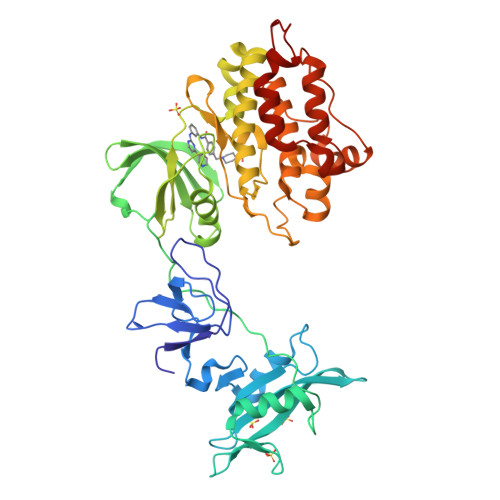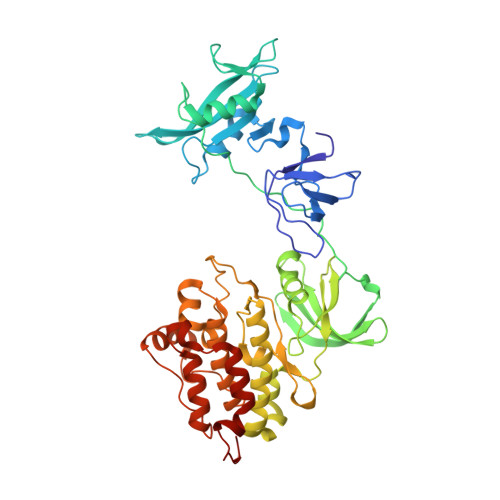The Crystal Structure of a c-Src Complex in an Active Conformation Suggests Possible Steps in c-Src Activation
Cowan-Jacob, S.W., Fendrich, G., Manley, P.W., Jahnke, W., Fabbro, D., Liebetanz, J., Meyer, T.(2005) Structure 13: 861-871
- PubMed: 15939018
- DOI: https://doi.org/10.1016/j.str.2005.03.012
- Primary Citation of Related Structures:
1Y57 - PubMed Abstract:
The regulation of the activity of Abl and Src family tyrosine kinases is mediated by intramolecular interactions between the SH3, SH2, and kinase (SH1) domains. We have determined the crystal structure of an unphosphorylated form of c-Src in which the SH2 domain is not bound to the C-terminal tail. This results in an open structure where the kinase domain adopts an active conformation and the C terminus binds within a hydrophobic pocket in the C-terminal lobe. NMR binding studies support the hypothesis that an N-terminal myristate could bind in this pocket, as observed for Abl, suggesting that c-Src may also be regulated by myristate binding. In addition, the structure contains a des-methyl analog of the antileukemia drug imatinib (STI571; Gleevec). This structure reveals why the drug shows a low affinity for active kinase conformations, contributing to its excellent kinase selectivity profile.
Organizational Affiliation:
Discovery Technologies, Novartis Institutes for Biomedical Research, CH-4056 Basel, Switzerland. sandra.jacob@novartis.com




















